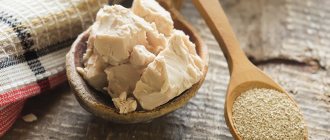Suluguni is a type of brined low-fat cheese from the Georgian region of Samegrelo, which is mainly made from goat and sheep milk (less often from cow milk). Its color will depend on the type of raw material (it can be either white or creamy). This is a moderately salted cheese with a dense layered structure and a sour milk smell. Today, many people are involved in the production of this product. But ancient technologies require a special approach to storing products. Because of this, many are interested in how to store suluguni at home.
Under what conditions should it be stored?
Storage of dairy products occurs under standard conditions and does not require additional explanation. However, there are rules for keeping certain types of products together. If they are not followed, the shelf life, including cheeses, can be significantly reduced.
- Please note that dairy and raw smoked cheeses should be kept separately. In addition, they are isolated from any strong aromas and perishable products.
- Suluguni should be stored in the refrigerator exclusively in brine; the cheese should be completely in the liquid. It is best to use a glass container and cover it with cling film.
- Sudden temperature changes are unacceptable for this product. The optimal storage temperature for Suluguni cheese is +6°C. If it turns out to be lower, the product will lose its original quality. That is why it is not advisable to place it in the freezer.
How different types of cheese are stored
How long homemade cheese can be stored depends on the specifics of the product.
Cottage cheese and curd cheese should not be kept in plastic bags or film.
It is stored only in enamel or glass containers with a closed lid.
But even so it doesn’t last long, only 5-7 days. Then it begins to dry out and loses its taste.
If you need to save it for a longer period, then put it in the freezer. Even after lying there for several months, after defrosting it will remain the same tasty and healthy product.
Using a freezer, the shelf life of it and other soft cheeses can be extended to several months.
Hard rennet cheeses are made on the basis of live bacterial starter - rennet enzyme for cheese.
Outside the refrigerator
Suluguni cheese can be stored at room temperature for no longer than 24 hours. Then it becomes too dry, becomes covered with plaque, and begins to smell unpleasant. In a slightly salted solution, its shelf life can be extended by several days.
- A strong brine is made from 1 liter of water (it must first be boiled and cooled) and 400 g. table salt. The resulting solution is poured into the product and left for storage.
- The cut cheese is kept in a weak saline solution (200 grams of salt per 1 liter of water).
The shelf life of suluguni in brine is quite long. But as a result of such storage, it absorbs a large amount of salt, which significantly worsens its taste.
Advantages and disadvantages of freezing in the freezer
You can freeze dairy products, but do not forget the well-known rules:
- Hard cheese is cut into thin pieces. Small portions are wrapped in a plastic bag. After all, all defrosted fermented milk product will need to be used immediately. Moreover, it will become suitable only for use in hot dishes.
- Parmesan can easily withstand being in the freezer for 1.5-2 months.
- The shelf life of paste varieties when frozen increases from a week to several months. But then the cheeses will only be suitable for spreading on pieces of bread.
- The quality of soft varieties does not suffer when they are in the freezer. But under one condition - it is in an airtight container so that the original snack is not saturated with odors and is not saturated with moisture.
- Blue cheese can also be frozen in store-bought packaging.
- The grated dairy product is placed in a plastic bag and wrapped tightly so that there is no air. It is not defrosted, but used for preparing hot dishes.
The shelf life of fermented milk products in the freezer should not exceed 5-6 months. After this period, the taste of the cheese decreases significantly.
Cheeses are defrosted in several stages. First - in the refrigerator, then - at room temperature. A microwave cannot be used for this purpose. The dairy product will simply melt in it. Hot water is not used either. In it, the fermented milk product will turn into an inedible mess.
How long to store
How long Suluguni cheese can be stored depends on its type.
- Storing white cheese is possible for several weeks and only in a salt solution.
- A smoked product can be kept in a place with low temperature and low humidity for about 60 days, provided that it is in vacuum packaging.
When Suluguni cheese is stored on a refrigerator shelf, in brine, its condition should be constantly checked. In cases where this is required, the liquid is replaced with fresh one.
When store-bought cheese has a long shelf life, it may be an indication that preservatives were used in the cheese making process.
Specifics of storage of various varieties
Different varieties of fermented milk snacks require completely different storage conditions.
Solid
Solid types of dairy products are stored for the longest time. The best temperature regime for them is from -3 to 0 °C. This means that these are the pieces that can be placed closer to the freezer.
Cheeses from France cannot be stored without cling film. And for Swiss ones, a closed enamel or glass container is suitable. The crust that is present on the snack is removed before consumption.
Pickled and soft
Some types of original snacks are sold in brine or whey. They are not stored without liquid. The freezer is also not suitable for them. The best place is at the bottom of the refrigerator. Use within 2-3 weeks.
Adygei cheese retains its taste even less - about 5 days. Vacuum packaging increases the period up to a month.
The smoked delicacy lasts for 3-4 months.
With mold
The original snack with noble mold is stored at slightly sub-zero temperatures for about 30 days. And if it’s positive – two weeks. Moreover, the cheese is placed in a tightly closed container, otherwise the dairy product will spoil and the inside of the refrigerator will smell bad.
Storing suluguni in the refrigerator
It is possible to store suluguni in the refrigerator for 2 - 3 months in a container with brine. But if this type of storage is not possible, you should wrap the cheese in film or put it in a glass container with a lid.
- Cheese, while in the refrigerator, must be isolated from perishable products, especially if they have a strong odor.
- Temperature changes negatively affect the quality of suluguni, so the product should not be placed on the refrigerator door.
- It is best to place the product on the inner shelf of the refrigerator, where conditions are maintained at +6°C.
- If a slippery coating or mold has formed on the surface of the cheese, or its color has changed or the smell has become unpleasant, you should stop eating it.
General rules and recommendations
It is recommended to place the cheese in a cool and humid place. The best option is a refrigerator. In this case, it is worth considering the following nuances: what to put the product in and where to place it in the refrigerator.
First of all, you should figure out at what temperature to store cheese in the refrigerator so that it does not mold. The optimal temperature regime is +6…8 ℃. Manufacturers recommend storing some varieties at a temperature of 0...+4 ℃, while expensive French cheeses are best stored in warmer conditions.
Air humidity at the storage location should be between 85-90%. If the moisture level is low, the product will dry out quickly, and if the moisture level is high, it will spoil.
If there is high humidity in the storage area, place a piece of refined sugar next to the cheese. Sugar will absorb excess moisture and extend the shelf life of the product.
The optimal place to store cheese in the refrigerator is shelves or drawers for vegetables and fruits. It is not recommended to place the product near the freezer compartment or in the doors. Frequent temperature changes reduce shelf life.
To preserve the cheese, after purchasing it, wrap it in parchment (wax paper) and seal it with tape. This will prevent mold from forming and the product from drying out. Be sure to use a marker or sticker to mark which variety is stored in the package and indicate the date of purchase. This will help control the expiration date.
You can use a glass or enamel container to store cheese . But it is not recommended to use plastic packaging, since the product will acquire the taste and smell of plastic. To protect hard cheese from drying out, wrap it in parchment and place it in plastic. When packaging the product, avoid creating a vacuum. In this form, you can take the cheese with you on the road, for example, when traveling on a train.
If a small spot of mold appears on the cheese, carefully cut off the affected area. Wrap the remaining whole product in clean wax paper.
Cheeses of different varieties should be stored in individual packages and separately from other products . This will prevent the mixing of flavors and protect the product from rapid spoilage and loss of taste.
Smoked suluguni
Smoked cheeses cannot withstand long-term storage, so it is advisable to consume them immediately after purchase. But if some part of it remains unused, it can be stored in cling film.
- In unopened vacuum packaging from the manufacturer, the product can be stored for about 2 months. For exact storage recommendations, please refer to the manufacturer's packaging.
- The shelf life of smoked suluguni after opening the package, wrapped in cling film and kept in the refrigerator, will be about 7 days.
Compound
To make this traditional Caucasian product, whey or starter culture, which consists of bacteria, is added to milk. In addition, cheese made from goat's milk or some other type of milk contains calcium chloride or pepsin. Thanks to some cooking features, the product is quite tasty, rich in vitamins and minerals. In addition to the starter, the Abkhaz cheese, whose name is “suluguni,” contains enzymes, which is why the taste does not have any extraneous shades and the aroma is neutral. The product contains the following nutrients:
- Phosphorus.
- Proteins and amino acids.
- Healthy cholesterol.
- Sulfur.
- Magnesium.
- Sodium.
- Iron.
- Calcium.
- Saturated fatty and organic acids.
- Potassium.
- Monosaccharides.
- Disaccharides.
Homemade cheese
Suluguni ripens in brine. This process must be kept under control. It is necessary to constantly check the condition of the cheese and the quality of the brine itself. If the surface of the liquid begins to form a film and an unpleasant odor appears, the brine will need to be immediately replaced with fresh one.
Homemade suluguni, like factory-made ones, should be transported in wooden boxes. The inside of the boxes should be lined with parchment or similar material. This product should be consumed no later than 5 days from the date of manufacture.
Brine cheeses: feta, feta cheese, suluguni, chechil (it is often confused with suluguni) must be stored according to certain rules. Like all dairy products, they have a very short shelf life and can spoil within a short period of time. Therefore, it is advisable not only for those who produce it, but also for consumers of this product to understand the issue of how to store Suluguni cheese.
Tips and tricks
To preserve the taste of varieties in brine for a long time, the liquid must be changed every three days.
Some housewives resort to this trick to keep hard and semi-hard cheeses fresh. The pieces are wrapped in a regular paper napkin. Moreover, they take white specimens. The cheese is placed in a plastic container with a closed lid and put in the refrigerator. When the fermented milk product is taken out, the container is wiped with a dry towel and the napkin is replaced.
Some families prefer to buy processed cheeses. They are subjected to heat treatment during preparation and are good because they can remain intact for three to four days even at room temperature. But, like all dairy products, they are best placed in the refrigerator and stored according to the expiration date indicated on the label. If the original packaging is opened, the processed product must be consumed within a couple of days.
The most important thing is not to buy a lot of dairy products. After all, supermarkets are open seven days a week and offer a huge range of cheeses for different tastes, for people with different financial capabilities.
And in almost all populated areas the lights are often turned off. This means the refrigerator is getting warmer. Temperature changes are bad for any type of cheese.
The original snack is used to create hot or cold sandwiches or to prepare hot dishes. The taste of the finished product will depend on how the cheese is preserved.
You can freeze dairy products, but do not forget the well-known rules:
Implementation time
According to Decree of the Government of the Russian Federation dated June 16, 1997 No. 720, for their intended use after the expiration date
According to the rules and regulations of SanPiN 2.3.2.1324-03, products that require special storage conditions and rules to preserve their quality should be considered perishable. Cheese is one of these products and is intended for short-term sale.
Repackaging, re-vacuuming of perishable food products after opening and breaking the integrity of the primary packaging in order to change the expiration date is prohibited.
Cheese products after packaging have been damaged should be sold within a period of no more than 12 hours, subject to storage conditions.
LiveInternetLiveInternet
—Categories
- Cooking (117)
- Health (73)
- Interesting to know (51)
- From the world by thread (51)
- Useful tips (34)
- For lovely ladies (29)
- Our smaller brothers (16)
- Equipment and technology (14)
- Planet Coffee (10)
- Rock Legends (9)
- World of Sports (7)
- Music box (6)
- A little humor (6)
- Mill of Myths (2)
- Peoples of the world (1)
—Search by diary
—Subscription by e-mail
-Statistics
Cooking suluguni according to the classic recipe at home
This step-by-step recipe is quite complex. But, having learned to cook classic suluguni, you will never cease to please yourself and your loved ones. Reserve some time, as the process is quite painstaking, and get started.
- Ten liters of milk
- Half a teaspoon (1.2 ml) enzyme
- Salt - to taste
- 200 grams of salt - for brine
- Water - 1 liter
- Pour milk into the pan. You need to heat it to 38 degrees, for this use a kitchen thermometer.
- While the milk is heating, prepare the enzyme. Dilute it in 5 milliliters of water and stir until dissolved.
- When the milk warms up to 38 degrees, pour in and mix well.
- Leave the milk for 35 minutes
- When a solid curd clot is formed, we proceed to straining.
- Place the cheese in cheesecloth and strain for two hours until a cheese mass resembling cottage cheese forms.
Tip: it’s better to leave the whey, as you can use it to make brine for suluguni. This product is actively used in cooking, so it will definitely not be superfluous in your kitchen.
- We leave it to stand until the morning in a warm place so that it oxidizes well.
- Before this you need to salt it. This should be done on all sides and only on the surface, without stirring the cheese.
- You can’t do without this, because when the cheese is salted, it thickens even more.
- In the morning we get Imeretian cheese, from which we will later make suluguni.
- To do this, pour water into a large saucepan and bring it to a boil. Then turn it off and let it cool a little (2-3 minutes).
- Cut the cheese into small cubes (1-2 centimeters), carefully throw into the water
- Now you need to mix the suluguni well. Take the cheese and put it in a bowl. We stir it with wooden spoons or spatulas, constantly squeezing and pressing it against the walls of the dish.
- The water should always be hot, so add it regularly as it cools. It needs to be changed on average 3-5 times, depending on readiness.
- We do this until the cheese becomes elastic and viscous.
- After the formation of a dense curd mass, pull out the cheese and place it in the refrigerator for two hours.
- Then you need to prepare the brine. Dissolve the salt in a liter of water.
- Place cheese in it for 24 hours.
- After this, take out the finished cheese and cut it into small pieces. Traditional suluguni is ready.
How to keep suluguni fresh for a long time
Storing suluguni cheese at home is easy. When using a saline solution for up to three and sometimes four months. In the cold (temperature no higher than +5°C) and without it it will remain fresh for no longer than ten days. After this period, it begins to dry out, becomes covered with an unpleasant coating and changes its color.
There are several options to keep it fresh longer, the most effective is to completely fill it with brine, and it is important to maintain a stable temperature of -6°C. If it is lower, the texture of the cheese will be destroyed, so never store the product in the freezer.
If you did not buy it in brine, then in order to maximize the shelf life of the cheese you need to do the following:
- put in milk;
- prepare a brine from salt water (dissolve 0.4 kg of salt in 1 liter of boiling water);
- soak the cheese in brine solution for one day;
- dilute the mixture with water or make another one, using half as much salt for the same amount of liquid;
- place in a container or glass jar, fill with brine, and put in the refrigerator.
Storing suluguni cheese at home is easy. When using a saline solution for up to three and sometimes four months. In the cold (temperature no higher than +5°C) and without it it will remain fresh for no longer than ten days. After this period, it begins to dry out, becomes covered with an unpleasant coating and changes its color.
Suluguni cheese according to a simplified recipe step by step
Many people simply don’t have time to cook according to a traditional recipe, because it requires a lot of patience and effort. But I want to spend a minimum of time and effort and get a very tasty product. Therefore, we suggest you learn step by step how to prepare suluguni cheese at home using a simplified recipe.
- 1 liter cow's milk
- 200 grams of sour cream
- 1 tablespoon salt
- Eggs - 3 pieces
- Place sour cream in a bowl and break three eggs into it.
- Stir until a homogeneous liquid mass is formed.
- Bring the milk to a boil and turn down the heat.
- Pour the resulting mixture of eggs and sour cream into it
- It is very important not to stir the mixture
- We wait about ten minutes until it boils.
- When boiling, a thick foam should form.
- Turn off and let cool for a couple of minutes.
- After this, drain the mixture through a colander with gauze.
- Gently squeeze through cheesecloth and leave in a colander.
- Let the cheese drain for one to two hours.
- When the suluguni has cooled, tighten it tightly in gauze and put it in the refrigerator for 12-15 hours.
- Boil a large pot of water.
- After that, take out the cheese, cut off a small piece and throw it into boiling water. If it starts to melt and stretch, add the rest of the cheese mass to it.
- Cook until viscous and elastic.
- We pull it out, let it cool to room temperature and put it in the refrigerator again.
- The next morning the cheese will be ready.
As you can see, preparing suluguni does not necessarily require a lot of hassle and time. You can spend just a couple of hours cooking and enjoy natural cheese according to a traditional recipe.
Beneficial features
We figured out what Abkhaz cheese is made from. But what are the benefits of this delicious product? Natural cheese is very useful for children, the elderly and pregnant women, as it has all the qualities that are inherent in fermented milk products. If you consume suluguni regularly, you can significantly strengthen your own immune system, improve the functions of the heart, as well as the nervous system. In addition, doctors recommend consuming Abkhazian mountain cheese to normalize blood composition, increase hemoglobin, and also improve hormonal levels. In addition, the product has a positive effect on nails, skin and hair.











